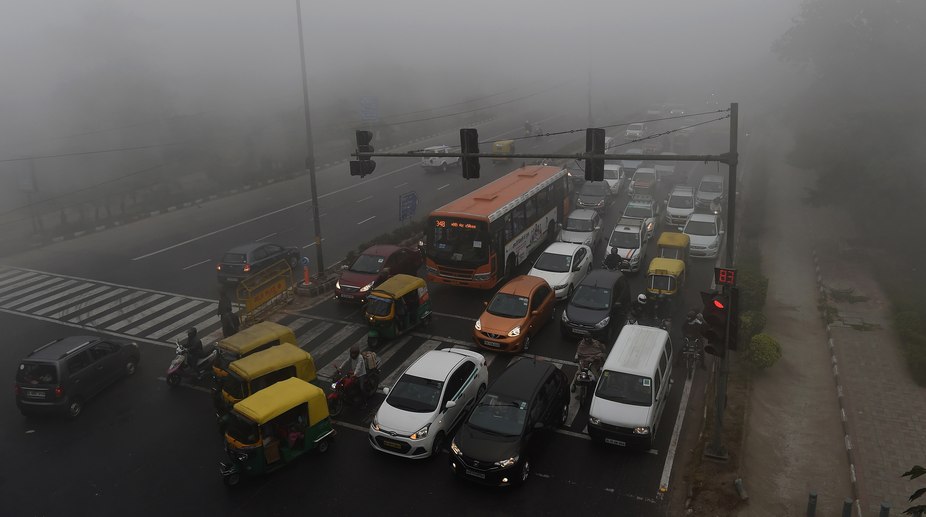CAQM invokes stage III GRAP curbs in view of spike in city’s AQI
According to the sub-committee of the CAQM, the AQI levels of the city exhibited a sharp increasing trend on Wednesday while the index value at 4 pm recorded at 365.

(Photo: IANS)
Both literally and technically that caption would be self-contradictory, but reality suggests otherwise. For over a week the Capital has been in the midst of a health emergency and the various authorities that hold sway have failed to cast aside their inflated egos and come up with a formulation that would raise hope ~ not confidence ~ that measures were in hand to counter the illeffects of the smog that has brought the city into global disrepute.
Flapping like headless chicken, they say one thing, then another and tie themselves in knots. Adjudicatory bodies are little better, seemingly more concerned about striking a strident note than about actual solutions. One international airline had “de-rostered” Delhi from its schedule, domestic flights and trains are delayed, and road mishaps are on the rise because of low visibility.
Advertisement
Very visible are people wearing “masks” when they step out of their homes, the sales of “air-purifiers” are soaring even among the middle-classes, and the photographs in the newspapers tell the same story ~ with scary repetition. Certainly a matter of shame for the national and state governments, and the judiciary too now that it has opted to intervene ~ alas unsuccessfully.
Advertisement
The “gold medal” for callousness must go to the union environment minister: he makes much of the “improvement” of the airquality index falling from “severe-plus” to “severe”. Is that the yardstick for achhe din? There is an open and disgusting squabble between the chief ministers of Haryana and Delhi over the failure to curb the burning of crop stubble while their counterpart in Punjab passes the problem off as the Centre’s.
The National Green Tribunal and the Delhi government are in a tussle over implementing the Odd-Even scheme: the former advocates “no exemptions”, but to the layman since auto-emissions add to pollution fewer vehicles on the roads translates into less emissions.
Fanciful hopes of using helicopters for aerial spraying of water have been grounded: choppers cannot fly low when the visibility is poor, and much of the Capital is a “no-fly zone”. Schools were closed, then re-opened without any marked improvement. Parking fees were hiked even at Metro stations so that regular commuters looked for other travel options. And the apex court favours “long-term” measures over the utterly ineffective “graded response action plan”, but waits till an emergency arises before “issuing notices”.
Ludicrous enough to trigger chuckles, even amidst the choking. The series of knee-jerk reactions only underscore the putrid state of affairs. The Central government insists it is the last word as far as Delhi’s affairs are concerned.
The ministers for urban development, transport and environment are quick to blame the Kejriwal government but cannot eject it through Constitutional means. The NGT and the courts use strident language, but do little tangible, while the Prime Minister either walks the international stage or the electoral platform.
Maybe deferring the winter session of Parliament will help ~ less traffic in the VIP zone. The rest of Delhi be damned: unless the Weather God steps in to “deliver” the citizen.
Advertisement